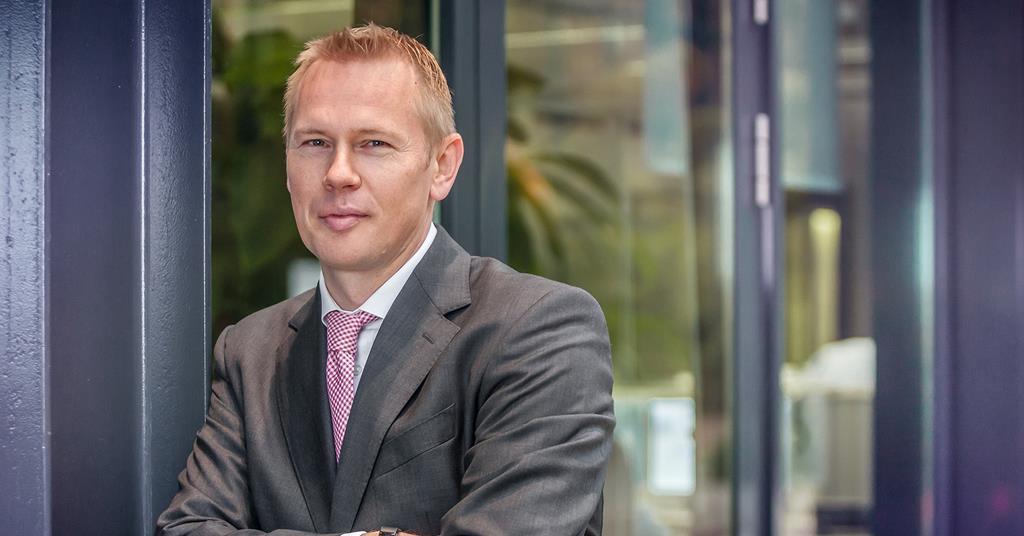A consortium led by Deutsche Pensionsfonds and PB Pensionsfonds, formed to deliver the first social partner pension model, envisions further growth through equity investments to generate returns, given the global economic recovery.
“As a result of this positive outlook for the capital markets, we see further growth potential, especially in equity investments,” Fabian von Löbbecke, CEO of HDI Pensionsmanagement and member of the board of directors of HDI Lebensversicherung, which is part of the insurer Talanx.
Von Löbbecke is also a member of the management board of PB Pensionsfonds, a subsidiary of HDI Deutschland Bancassurance.
The outlook for corporate bond yields also remains positive based on an optimistic view of capital markets. Government bond yields may continue to rise in the wake of a positive economic situation, higher inflation expectations and reduced support from central banks, while in return bond prices would fall, did he declare.
“We consider government bonds to be appropriate for diversification and [to achieve] higher returns in the medium term, ”added von Löbbecke.
Under the brand “Die Deutsche Betriebsrente” (DDBR), the insurers Zurich and Talanx have jointly built a model to offer a solution for social partner pensions, or Sozialpartnermodell, a form of occupational pension.
Talanx has agreed with the union Ver.di on the first social partner pension model which is expected to come into effect on July 1, subject to the approval of financial supervisory authority BaFin.
The capital of the social partners’ pensions must be invested in a special alternative investment fund (Special-AIF).
The Spezialfonds DDBR1 was created on December 3, 2018, with Talanx and Zurich each having invested 50 million euros to start it up. Contributions also flow into the Spezialfonds, which is divided into two sub-funds.
One compartment invests exclusively in foreign stocks, while the other invests in foreign bonds, explained von Löbbecke, adding that the two compartments should have equal weight.
If the weight changes due to developments in the capital markets, a rebalancing process takes place, he added.
“It might make sense in the future, with increasing fund volumes, to include other asset classes,” for example illiquid asset classes, said von Löbbecke.
The partners have mandated JP Morgan Asset Management to manage the bond compartment and DWS for the equity segment.
The decision to divide the allocation into asset classes was taken taking into account the pension plan based on the pure defined contribution (CD) product – or Reine Beitragszusage – and returns long-term expectations.
“The [pure DC] the product, in combination with a capital investment, aims to obtain the highest possible return or the highest possible target pension (Zielrente), higher than in the old company pension [schemes]’”Said von Löbbecke.
Sustainability and safety for employees
The allocation of assets in the social partners’ pension model will aim for maximum return on defined risks by integrating environmental, social and corporate governance (ESG) into the investment process.
The quantifiable information used to assess potential risks and returns “does not, however, give the full picture” in conventional investment processes, said von Löbbecke.
Therefore, an active asset management approach in the bond segment adds elements of sustainability to assess ESG aspects.
“It requires access to relevant information in the form of ESG analyzes, assessments and data. [and] this information is provided by specialized external service providers. The information ultimately feeds decisions to buy or sell assets, ”he added.
The Pensionsfonds applies an exclusion list including companies that do not respect the United Nations Global Compact with regard to controversial weapons, or that are mainly active in companies such as coal, oil and nuclear energy, or that do not adhere to human rights and labor standards.
“It was agreed that Ver.di would be involved in the further development of the ESG criteria for the Spezialfonds,” said von Löbbecke.
The DDBR provides various mechanisms to reduce fluctuations in the target pension for employees.
The first element to ensure some security in terms of target retirement for employees is a “sound investment policy”, with regular reviews of strategic asset allocation, he said.
The second element is the so-called “collective cushion” to “cushion” temporary fluctuations in capital markets and assign an expected interest rate to beneficiaries.
The collective buffer model points to returns that are as reliable as possible. “It often works even when the financial markets show a negative performance [while] periods of positive developments in capital markets once again fill the collective buffer, thus protecting against the next phases of fragility, ”added von Löbbecke.
A third element of security concerns the choice of a discount rate for retirees and a capital surplus for the transition to the retirement phase.
“[So that] at the start of the pension [phase], a higher capital cover is available than what would be required on an arithmetic basis for the payment of the pension, ”he said.
Finally, employer contributions also offer an additional level of security to employees.

